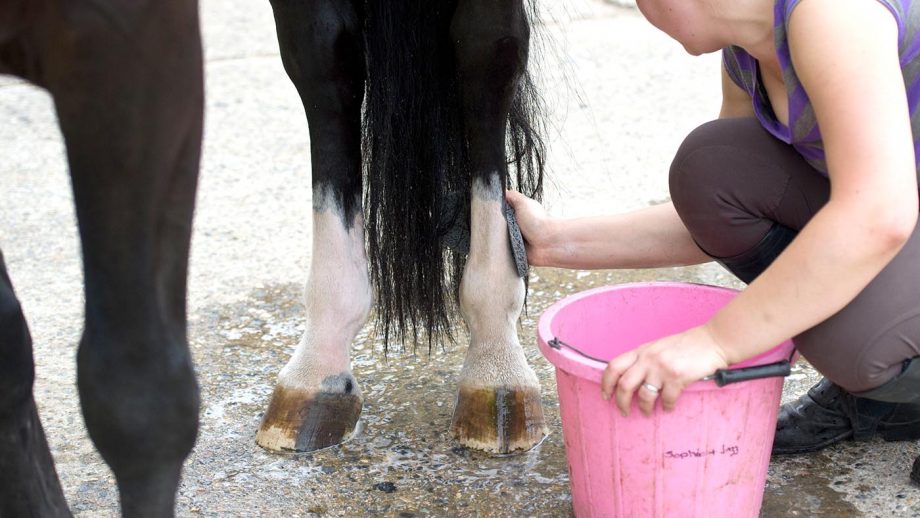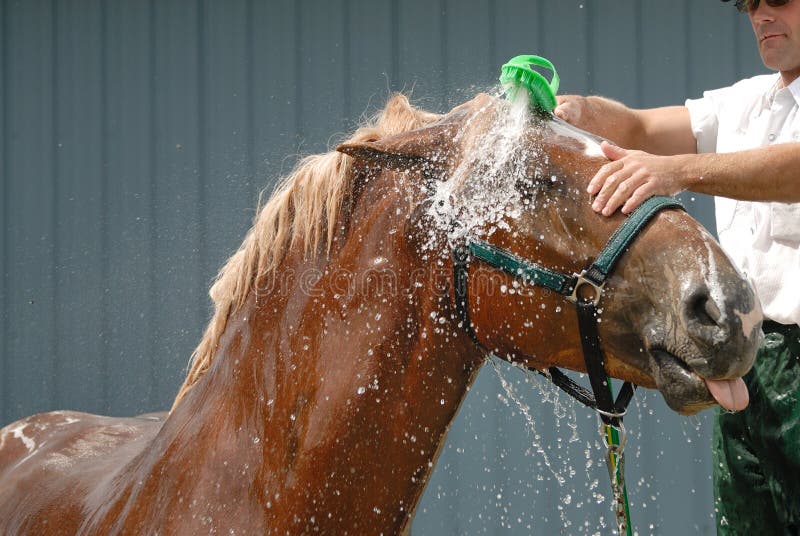As a responsible horse owner or caretaker, being prepared for emergencies is crucial. Horses, being large and powerful animals, can experience a variety of accidents and health issues. Knowing how to react swiftly and effectively during an emergency can make the difference between a minor issue and a serious problem. This guide provides essential first aid information and practical advice on handling common emergencies that may arise while caring for your horse.
The Importance of Horse First Aid
A horse’s size and nature make them susceptible to a range of injuries and conditions, from minor cuts and bruises to more serious emergencies like colic, fractures, or severe lacerations. Having a basic understanding of horse first aid not only helps you respond effectively but can also save valuable time before professional help arrives.
Equally important is the need for a well-stocked and easily accessible first aid kit. Having the right tools at hand ensures you’re prepared for most situations.
Essential Components of a Horse First Aid Kit

Before delving into specific emergencies, it’s important to understand the basic supplies you should have in your horse first aid kit. Ensure your kit is easily accessible, well-stocked, and regularly checked for expiration dates. Here are the essential components:
- Bandages: Vet wrap, cotton padding, gauze pads, and self-adhesive bandages.
- Wound care supplies: Antiseptic solution, iodine, hydrogen peroxide, and wound ointments.
- Thermometer: A digital thermometer for checking your horse’s temperature.
- Tweezers and scissors: For removing foreign objects like splinters or thorns.
- Cotton swabs: For cleaning wounds and applying ointments.
- Stethoscope: To monitor your horse’s heart rate and respiration.
- Equine first aid manual: A guide for reference in case of emergency.
- Cold and heat packs: For reducing swelling or providing comfort in case of sprains or muscle injuries.
- Gauze pads and rolls: To dress wounds and absorb fluids.
- Antibiotic ointment: For treating minor cuts and abrasions.
- Elastic bandage: To wrap injured limbs.
- Sterile saline solution: For flushing eyes and wounds.
Common Horse Emergencies and How to Handle Them
1. Wounds and Lacerations
Horses are prone to injuries, especially when they’re in the pasture or during training. Cuts and lacerations can occur from sharp objects or rough terrain.
Steps to Take:
- Clean the wound: Use saline solution or an antiseptic solution to clean the area around the wound.
- Stop the bleeding: Apply pressure to the wound with a clean cloth or gauze. If the bleeding is severe, use a bandage to apply pressure.
- Dress the wound: Apply a sterile dressing or gauze pad over the wound. Wrap the area with bandaging material, ensuring it’s secure but not too tight.
- Monitor for infection: Keep an eye on the wound for signs of infection, such as swelling, redness, or pus. If the wound doesn’t improve in a few days, contact your veterinarian.
- Veterinary consultation: If the wound is deep or large, or if it involves a joint, bone, or vital organs, call your vet immediately.
2. Colic: A Life-Threatening Emergency
Colic is a condition that involves abdominal pain and discomfort, often resulting from digestive issues. It is one of the most common equine emergencies and can be life-threatening if not treated quickly.
Steps to Take:
- Observe your horse: Watch for signs of colic, which include rolling, pawing, kicking at the abdomen, and a lack of appetite.
- Keep your horse calm: Try to prevent your horse from rolling, as this can cause more damage. Keep them in a safe, quiet area and monitor their condition.
- Contact a vet immediately: Colic can worsen quickly, and only a veterinarian can determine the exact cause and severity. If your horse is showing severe symptoms, such as bloating, sweating, or distress, get help immediately.
- Withhold food and water: Until your vet arrives, avoid feeding your horse or giving them water, as this can make the situation worse. Follow your vet’s instructions carefully.
3. Laminitis (Founder)
Laminitis is a painful condition that affects a horse’s hooves. It’s typically caused by an overload of carbohydrates or excessive weight on the hooves, often due to rapid diet changes or illness.
Steps to Take:
- Call your vet: Laminitis requires prompt attention from a professional. The condition can quickly become severe if left untreated.
- Monitor symptoms: Horses with laminitis may have an elevated temperature in their hooves, be reluctant to move, or shift their weight to avoid putting pressure on their front feet.
- Minimize movement: Limit your horse’s movement as much as possible to avoid exacerbating the condition.
- Provide pain relief: Follow your veterinarian’s advice on pain management, which may include anti-inflammatory medications or specific supplements.
4. Sprains, Strains, and Muscle Injuries
Horses are active animals and prone to muscle injuries or strains, especially when they are overworked, during training, or after a sudden movement.
Steps to Take:
- Rest the injured horse: Limit movement to prevent further strain on the injured area.
- Cold therapy: Apply a cold pack or ice to the affected area for 15–20 minutes to reduce swelling and inflammation. Repeat every few hours during the first 48 hours.
- Wrap the injury: If the injury is on a limb, use a bandage to provide support and reduce swelling.
- Veterinary care: If the injury is severe, or if your horse is not improving after rest and treatment, call your vet for further evaluation.
5. Heat Stroke and Dehydration
Heat stroke and dehydration are common in summer, especially after strenuous work or when your horse has been exposed to high temperatures.
Steps to Take:
- Cool your horse down: Hose your horse with cool (not cold) water, focusing on areas like the neck, chest, and legs. Use a sweat scraper to remove excess water to aid cooling.
- Offer water: Provide your horse with fresh water. If they aren’t drinking, you can try offering them small sips every few minutes.
- Monitor for symptoms: Signs of heat stroke include rapid breathing, excessive sweating, weakness, and confusion. If your horse shows these signs, call your veterinarian immediately.
6. Eye Injuries
Horses can suffer from various eye injuries, ranging from mild irritation to severe trauma. If not treated promptly, eye injuries can result in long-term damage or blindness.
Steps to Take:
- Examine the eye carefully: If your horse shows signs of eye pain, such as squinting, tearing, or excessive blinking, gently examine the area for any foreign objects like dust, dirt, or grass.
- Rinse the eye: Use a sterile saline solution to flush out any debris gently. Avoid rubbing the eye, as this could cause further damage.
- Seek veterinary help: If you suspect the injury is more severe, such as a corneal ulcer or deep laceration, contact your veterinarian immediately.
Preventing Emergencies: Best Practices for Horse Care
While emergencies can happen at any time, there are steps you can take to minimize the risk of injuries or health issues:
- Maintain a regular veterinary schedule: Regular check-ups, vaccinations, and dental care are essential for early detection of potential issues.
- Monitor your horse’s weight and diet: Make sure your horse is on a balanced diet appropriate for their age, work level, and health status. Sudden dietary changes should be avoided.
- Inspect equipment regularly: Ensure that tack, such as saddles, bridles, and halters, are in good condition and fit correctly.
- Provide safe living conditions: Check pastures for hazards like sharp objects, poisonous plants, or uneven ground that could lead to injuries.
- Proper grooming and hoof care: Regular grooming and hoof inspections are essential to detect problems early and keep your horse comfortable.
Conclusion
Equine first aid knowledge is an essential skill for any horse owner. While accidents and emergencies cannot always be prevented, knowing how to respond to common issues can make a huge difference in the outcome. Always have a well-stocked first aid kit on hand, monitor your horse’s health regularly, and consult a veterinarian when necessary. By being prepared, you ensure that your horse stays safe and healthy, and that you can act confidently during any emergency.







